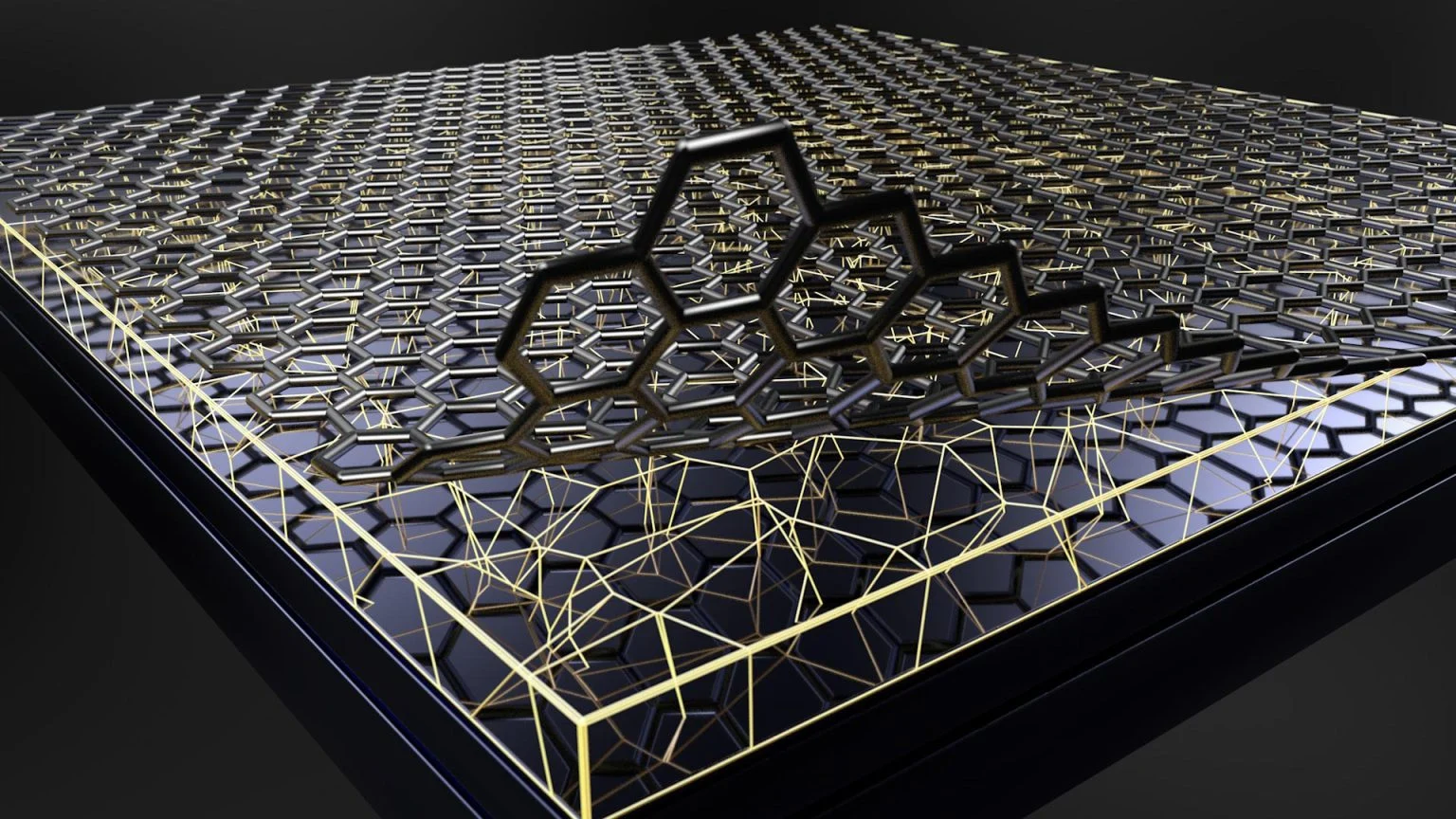"Scientists applied a simple approach for growing hBN films on the surface of ubiquitous steels and other metal alloys to “armor” them and thus increase their capabilities. Credit: Adam Malin/ORNL, U.S. Dept. of Energy" (ScitechDaily, Invisible Armor for Steel: How hBN Coating Is Reinventing Metal Durability)
The invisible armor layer.
The hexagonal boron nitride (hBN) can create lightweight armor on steel. The hexagonal boron nitride forms similar structures with the graphene. But it's easier to make and put to cover large areas than graphene. The idea of this kind of layer is simple. An extra layer with homogenous material can conduct impact energy between those 2D layer particles. And that thing isolates that layer from the steel core. The use of that kind of armor can make revolution for tanks, helicopters, and aircraft. And that lightweight strong armor can also used in satellites.
The hBN layer can also give new strength to armor-piecing ammunition. In that case, the hBN layer will cover the flechette (sabot, arrow ammunition) or regular bullet. That thing makes the new strength for that kind of ammunition and improves their armor-piercing ability.
"For example, armoring may boost the ability of solar panels to conduct heat and resist environmental factors. Additionally, it allows semiconductors to maintain proper operating temperature, and aerospace turbine blades to guard against wear, reduce friction and withstand hot conditions". (ScitechDaily, Invisible Armor for Steel: How hBN Coating Is Reinventing Metal Durability)
The microchip-looking robot bugs can used to create self-healing layers.
In some models, the nanomaterial is forming robots that look like microchips. Those robots are like pieces of the puzzle. And they can fix damages on that layer quite easily.
When something hits that layer the robot bugs will removed. And that structure limits damages. Then the new robot bugs can create a new layer on that material. The idea is that the system will remove all damaged robots from the layer. And then it transports the new replacing parts of that puzzle with it.
"Researchers have developed an advanced optical technique to uncover hidden properties of the quantum material Ta2NiSe5 (TNS) using light. By employing terahertz time-domain spectroscopy, the team observed anomalous terahertz light amplification, indicating the presence of an exciton condensate. This discovery opens up new possibilities for using quantum materials in entangled light sources and other applications in quantum physics. Credit: SciTechDaily.com" (ScitechDaily, Shadows and Light: Discovering the Hidden Depths of Quantum Materials)
"Using an improved technique that gave access to a broader range of frequencies, the team was able to uncover some of the hidden properties of the TNS exciton condensate. Credit: Sheikh Rubaiat Ul Haque / Stanford University" (ScitechDaily, Shadows and Light: Discovering the Hidden Depths of Quantum Materials)
The new quantum materials.
The new quantum materials are things that are revolutionizing material research more than nobody ever imagined. Quantum materials are materials that are more than nanomaterials. In some models, the quantum materials can be stronger than even diamonds. The idea is that active quantum materials are things like laser rays.
Those laser rays will transfer energy out from particles. And that laser ray will pull the material together. That thing allows it to conduct energy out from material when it faces impact or electromagnetic radiation. The laser- or cathode ray that means electron flow can act like a thermal pump.
Graphene ribbons and hemoglobin are the new power sources for batteries.
"Mickael Perrin’s pioneering work in quantum electronics focuses on generating electricity with minimal loss and improving energy efficiency in electronics, using groundbreaking applications of graphene nanoribbons. His research, recognized by prestigious awards, aims to revolutionize the practical application of quantum technologies. Credit: SciTechDaily.com" ScitechDaily, Nanoscale Power Plants: Turning Heat Into Power With Graphene Ribbons)
Graphene ribbons turn heat straight to electricity.
Graphene ribbons that can harvest energy from heat are interesting tools. Those things can harvest energy from exhaust gases. And that thing makes the power plants more energy efficient than before.
The graphene ribbons are nano-size. But a large number of them can deliver electricity for things like fast-reacting sensors. And systems that optimize the fuel use. And a large number of those graphene ribbons can deliver energy for larger-scale objects.
The use of heat as a power source is interesting. The graphene ribbons are fundamental because they turn heat straight into electric power. And that makes them useful energy sources for machines. That can operate in heat.
"Researchers at the University of Cordoba, in collaboration with other institutions, have developed a new type of battery using hemoglobin as a catalyst in zinc-air batteries. This biocompatible battery can function for up to 30 days and offers several advantages, such as sustainability and suitability for use in human body devices. Despite its non-rechargeable nature, this innovation marks a significant step towards environmentally friendly battery alternatives, addressing the limitations of current lithium-ion batteries. (Artist’s Concept.) Credit: SciTechDaily.com" (ScitechDaily, The Future of Sustainable Energy? Scientists Create First-Ever Battery Using Hemoglobin)
The use of hemoglobin in the battery is also a fundamental tool.
The use of hemoglobin in batteries makes it possible to create environmentally friendly batteries. But that thing can used to create nano-size power sources for nanorobots. The hemoglobin battery can be the deck of red blood cells. And then there could be a gold layer between those blood cells. That kind of system can deliver electricity to small-size microchips. The hemoglobin molecule's central actor is iron.
And if iron touches with some nobler or less nobler metal that causes electron flow between iron and that other metal. The less nobler metal can be zink, that used in ships to deny corrosion. In metallurgy, the less noble metal faces corrosion. And the distance between metals in a Galvanic series determines how fast electrons travel between those layers.
https://scitechdaily.com/invisible-armor-for-steel-how-hbn-coating-is-reinventing-metal-durability/
https://scitechdaily.com/nanoscale-power-plants-turning-heat-into-power-with-graphene-ribbons/
https://scitechdaily.com/shadows-and-light-discovering-the-hidden-depths-of-quantum-materials/
https://scitechdaily.com/the-future-of-sustainable-energy-scientists-create-first-ever-battery-using-hemoglobin/
https://en.wikipedia.org/wiki/Galvanic_series
https://learningmachines9.wordpress.com/2024/01/27/new-nano-and-quantum-materials-make-new-and-strong-structures-and-new-energy-sources-possible/









No comments:
Post a Comment
Note: Only a member of this blog may post a comment.